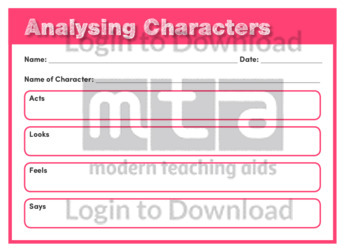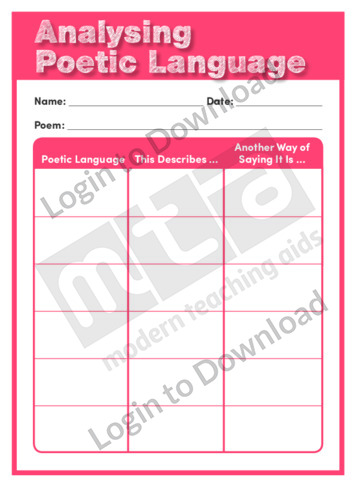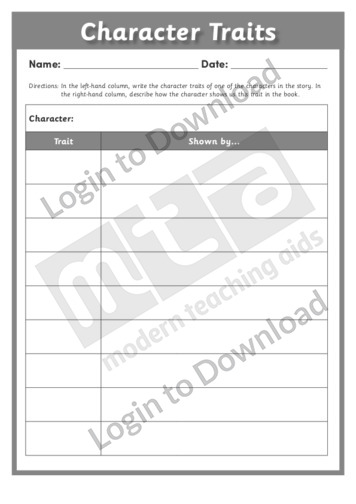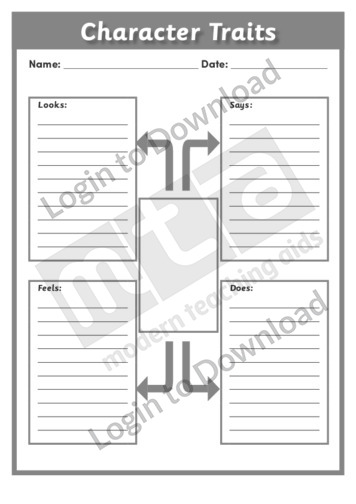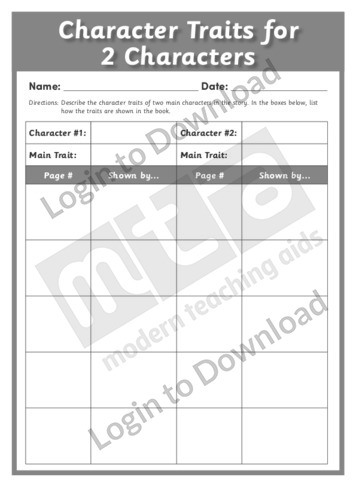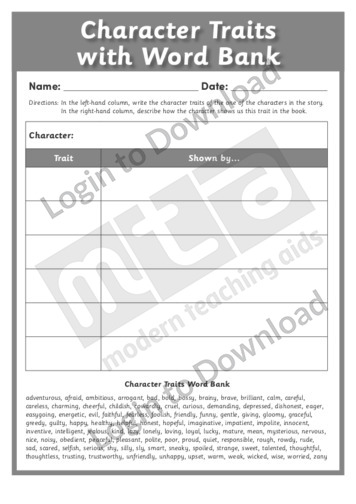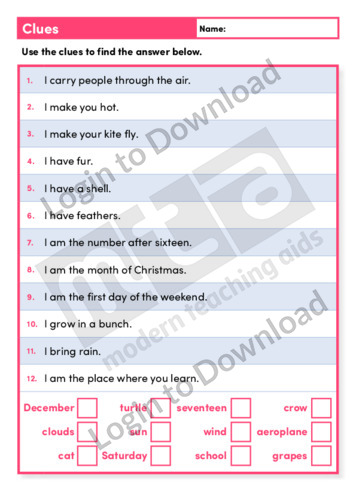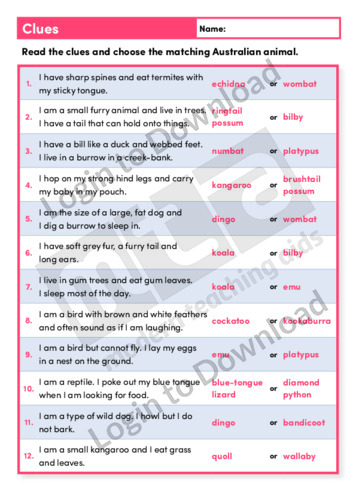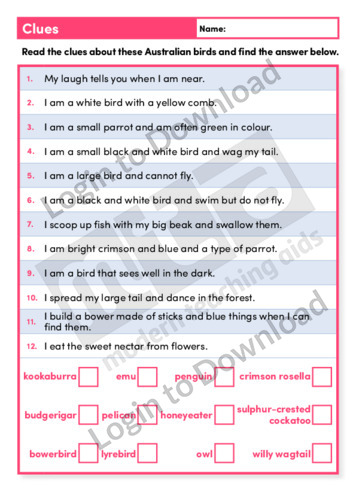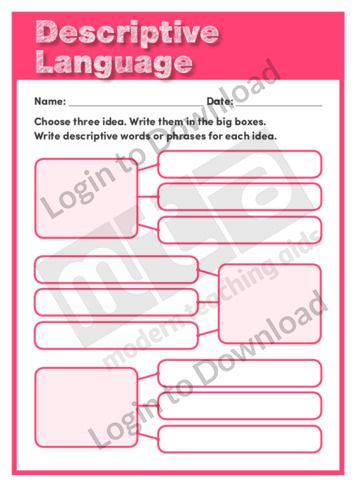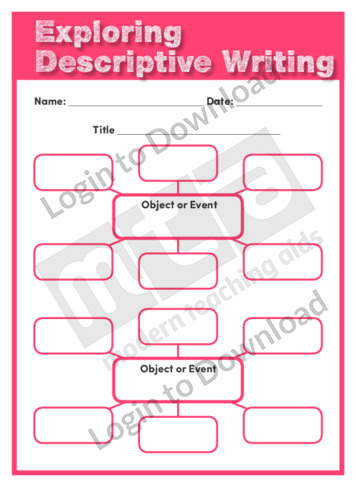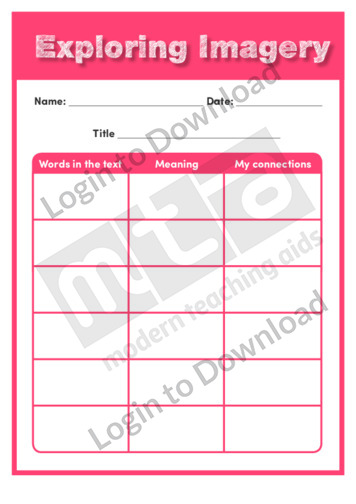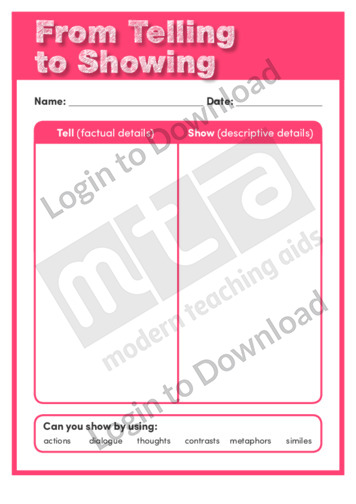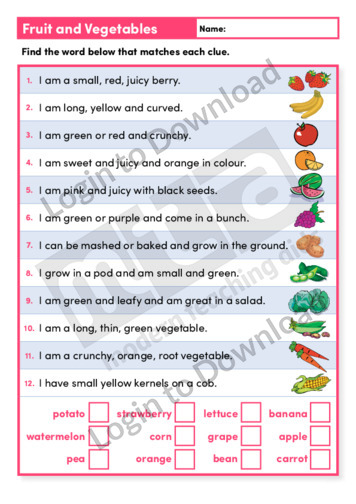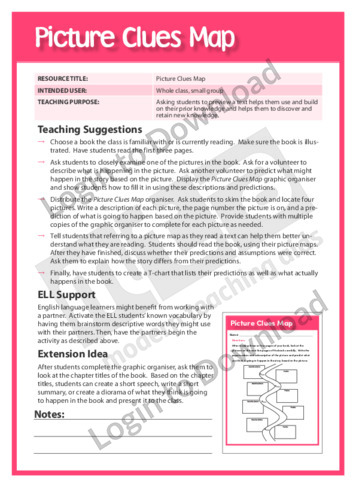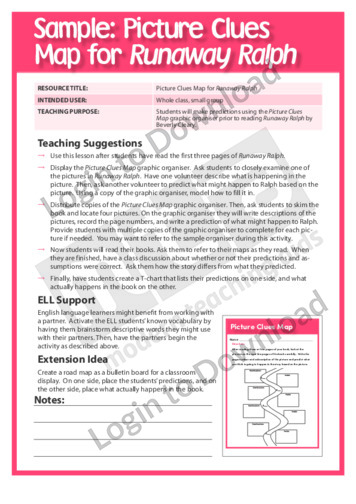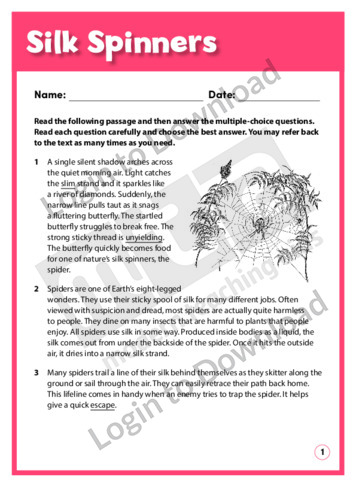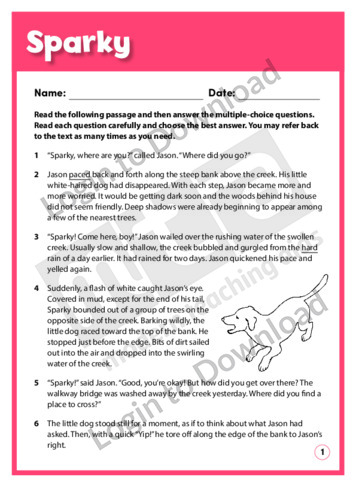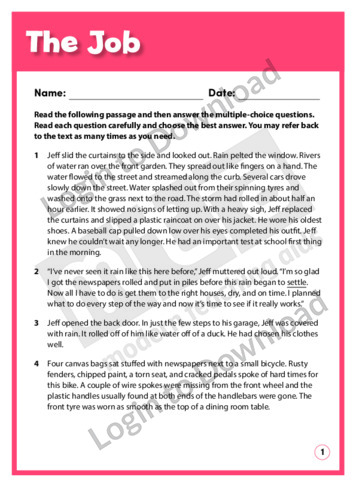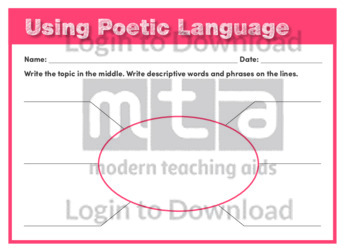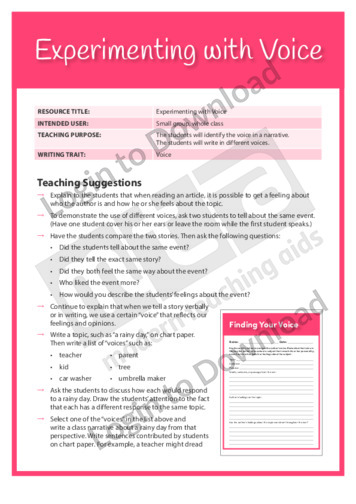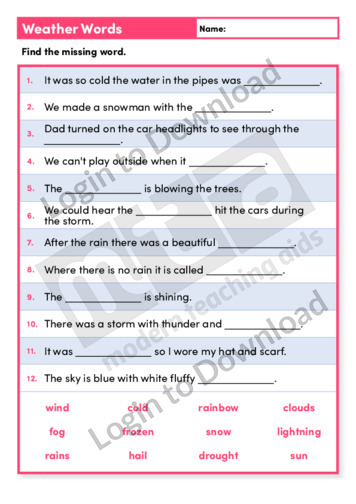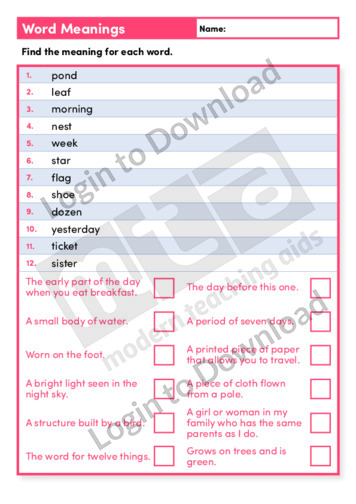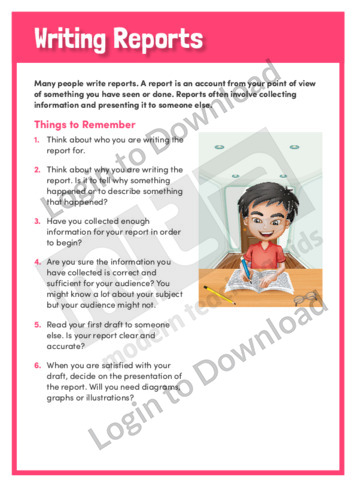This graphic organiser, ‘Analysing Characters’ supports the teaching of reading and writing by prompting students to explore how and why a character behaves in a story.
This graphic organiser, ‘Analysing Poetic Language’ supports the teaching of reading and writing by prompting students to explore different ways of expressing meaning as they read or write.
This graphic organiser, ‘Character Traits’ provides students with the opportunity to explore specific qualities of a fictional or non-fictional character, and explain how these traits are shown through the text. This table can be used during post-reading, whole class discussions or individually as a comprehension activity that encourages critical reflection and justification of opinions.
This graphic organiser, ‘Character Traits’ provides students with the opportunity to mind map and brainstorm specific character qualities including their appearance, speech, feelings and actions. Use this during post-reading, whole class discussions as a comprehension activity or when individually organising ideas to be used when writing about characters in creative stories.
This graphic organiser, ‘Character Traits for 2 Characters’ provides students with the opportunity to explore specific qualities of two fictional or non-fictional characters, and explain how their traits are shown through the text. This table can be used during post-reading, whole class discussions or individually as a comprehension activity that encourages critical reflection and justification …More
This graphic organiser, ‘Character Traits with Word Bank ‘ provides students with the opportunity to explore specific qualities of a fictional or non-fictional character, and explain how these traits are shown through the text. This table can be used during post-reading, whole class discussions or individually as a comprehension activity that encourages critical reflection and …More
This reading activity, ‘Clues’ provides opportunities for practice with word recognition and association with meanings.
This reading activity, ‘Clues’ provides opportunities for practice with identifying Australian animals from clues.
This reading activity, ‘Clues’ provides opportunities for practice with reading clues to find the appropriate animal to match.
This graphic organiser, ‘Descriptive Language’ supports the teaching of reading and writing by prompting students to record descriptive details as they read or write.
This graphic organiser, ‘Exploring Descriptive Writing’ supports the teaching of reading and writing by giving students a template for identifying or adding descriptive details.
This graphic organiser, ‘Exploring Imagery’ supports the teaching of reading and writing by giving students a template for identifying meanings and connections with words in a text.
This vocabulary activity, ‘Fruit and Vegetables’ supports vocabulary development by encouraging students to identify words using clues.
This reading activity, ‘Missing Words’ provides opportunities for practice with completing sentences using picture clues.
This graphic organiser, ‘Picture Clues Map’ asks students to preview a text and use their prior knowledge to predict the outcomes.
This graphic organiser, ‘Picture Clues Map for Runaway Ralph’ asks students to make predictions prior to reading Runaway Ralph by Beverly Cleary.
In the report, ‘Silk Spinners’ readers learn about how and why spiders make webs of silk. It provides opportunities for students to practise vocabulary and comprehension skills. Answer sheet provided with file download.
This story, ‘Sparky’ tells what happens when a boy’s dog goes missing near a stream. It provides opportunities for students to practise vocabulary and comprehension skills. Answer sheet provided with file download.
In this story, ‘The Job’ Jeff has to deliver papers but he finds his bike has a flat tyre. His little brother helps him solve the problem. The story provides opportunities for students to practise vocabulary and comprehension skills. Answer sheet provided with file download.
This graphic organiser, ‘Using Poetic Language’ supports the teaching of reading and writing by prompting students to record descriptive details as they read or write.
This Writing Traits activity ‘Experimenting with Voice’ encourages students to identify the voice in narratives and to practise writing in different voices.
This reading activity, ‘Weather Words’ provides opportunities for practice with matching descriptions of weather conditions to their pictures.
This reading activity, ‘Weather Words’ provides opportunities for practice with finding the missing weather vocabulary for the sentences.
This vocabulary activity, ‘Word Meanings’ supports vocabulary development by encouraging students to find the meanings of nouns.
This quick reference guide, ‘Writing Poetry’ provides students with the opportunity to write poetry, including shape poems.
This quick reference guide, ‘Writing Reports’ provides students with guidance for writing reports.
It�s that easy!

